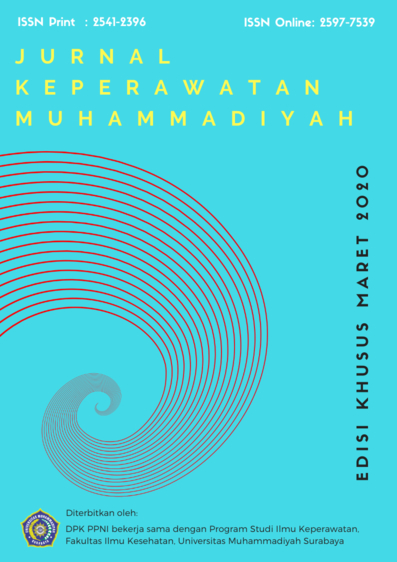Aplikasi Virtual Classroom sebagai Media Pembelajaran Berbasis Android Pada DIII Kebidanan Daerah Urban Dan Sub Urban
DOI:
https://doi.org/10.30651/jkm.v5i2.4169Keywords:
Virtual classroom, disciplined behavior, independenceAbstract
Objective: This study studies the learning of using virtual classroom applications as an Android-based learning media for midwifery urban and sub-urban DIII students
Method:The research design uses quasi-experimental design (Quasi experiment) with a randomized pretest-posttest with control group design approach. This research was conducted at STIKES Nani Hasanuddin Makassar and at the Salewangan Maros Midwifery Academy in December to January 2019. The number of samples in STIKES Nani Hasanuddin were 32 people consisting of 15 people in the control group and 17 people in the intervention group while in the Salewangan Midwifery Academy as many as 23 people consisting of 12 people in the control group and 11 people in the intervention group. The control group in this study is a group that carries out conventional teaching and learning processes. The groups that will be intervened use a virtual classroom application in the learning process and then an assessment of disciplinary behavior and independence is carried out by observing attendance and independent assignments.
Results:The results of the study with the chi-square test showed a comparison of behavioral indicators of the Sig value discipline. or P Value of 0.496> 0.05, there is no significant difference between the discipline behavior of the urban and sub-urban control groups. And the Sig. or P Value of 0.496> 0.05 then there is no significant difference between the independence of the control group in urban and sub-urban areas. From the results of comparison of indicators of discipline behavior of DIII Midwifery students in urban and sub-urban areas, it was found that the Sig. or P Value of 0.203> 0.05 then there is no significant difference in discipline behavior between the intervention groups in urban and sub-urban areas. And the Sig. or P Value of 0.823> 0.05, there is no significant difference in independence between the intervention groups in urban and sub-urban areas.
Conclusion:Â There was no significant difference in independence between the intervention groups in urban and sub-urban areas
References
Ajami Khalil, Haidar Ola. 2018. Applying Student Evaluation of Teaching (Set) in a Virtual Learning Environment (Case Study: Syrian Virtual Learning). International Journal of Teaching and Education Vol. VI, No. 2/2018. DOI: 10.20472 / TE.2018.6.2.002
Apmawita, Bustari, Susi. 2015. The Influence of Student Learning Independence, Use of Information Technology (Internet) and Study Habits on Student Learning Outcomes of the State Polytechnic of Batam. Master of Economic Education. Padang State University
Budi Eko Nur Budi. 2017. Application of Virtual Class Learning in Explanatory Text Material to Improve Activities and Learning Outcomes of Indonesian Students in Class I Ips 2 High School 1 Holy Year 2017. Journal of Social Sciences Education, Vol 27, No.2, December 2017, p-ISSN: 1412- 3835; e-ISSN: 2541-4569.
Inggar Yadi Januar. 2015. Student Discipline Level in the Lecture Process in the Department of Sport Science, Pontianak Physical Education, 2014. Physical Education and Recreation Study Program at the Department of Sport Science. Tanjungpura University
Sudiana Ria, Abdul Fatah and Ethics Khaerunnisa. 2017. Student Learning Independence through Virtual Class Based Learning. JPPM Vol .10 No. 1
Downloads
Published
Issue
Section
License
- Penulis tetap memegang hak atas karyanya dan memberikan hak publikasi pertama kepada jurnal ini yang secara simultan karya tersebut dilisensikan di bawah:Â Creative Commons Attribution-ShareAlike 4.0 International (CC BY-SA 4.0)













